Types of Jewelry: The Ultimate Guide on All Jewelry Styles, Materials, and Designs

Few of us desire to one day own a drawer filled with different kinds of Jewelry, but we often need clarification on how to get there. For others, pieces of Jewelry are a necessary evil – a fall safe for casual or formal occasions to which they might be invited.
Whichever ever situation you find yourself in, allow me to educate you. When it comes to your choice of Jewelry, you need to consider many factors: type, material, and design of the Jewelry. If this sounds confusing and new to you, don't fret. This is your ultimate guide to all kinds of Jewelry.
Origin of Jewelry
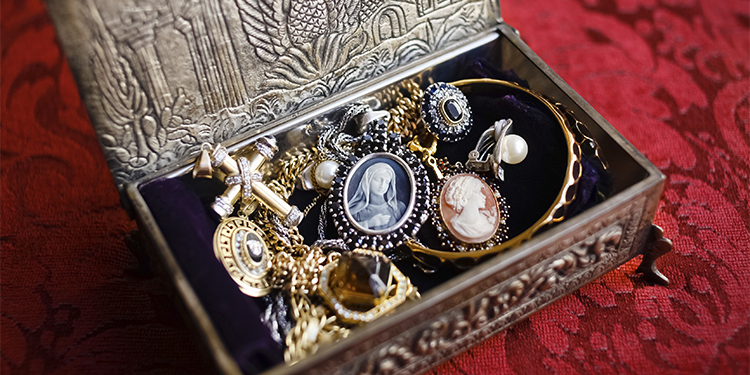
Although modern Jewelry is synonymous with precious metals, stones, and other expensive materials, its origins were far more humble.
Pieces of Jewelry made out of gemstones first appeared about 6000 years ago in Mesopotamia. Of course, people wore Jewelry before that, but they were not made of precious stones – they were made of feathers, bones, and shells.
Back in Mesopotamia, Jewelry used to be made out of precious metals and styled as leaves, spirals, or even bunches of grapes – they were thought to hold considerable spiritual powers.
As time went by, people's perceptions of Jewelry also changed. People use Jewelry to express their emotions, style, and originality. Also, jewelry makers can now fashion Jewelry from wood, pearls, plastic, or even silver.
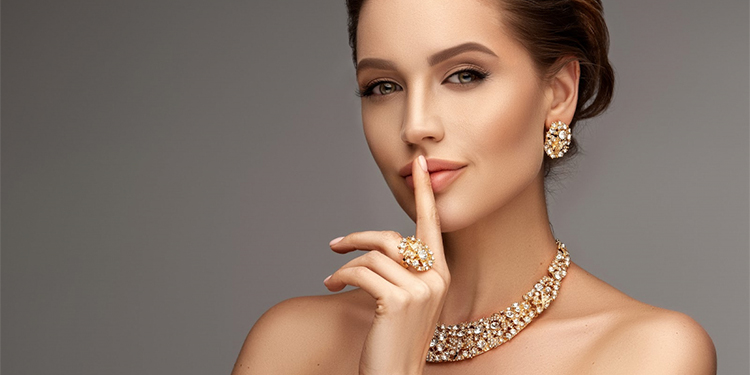
Also, Women now have more options than ever before, and Jewelry does not have to be a present from a man in their life as it formerly did.
Types of jewelry materials
With an abundance of different materials on the market, it's easy to get confused and lost when buying Jewelry! So, this section deals specifically with the main types of jewelry materials. Let's get started!
Gold Jewelry
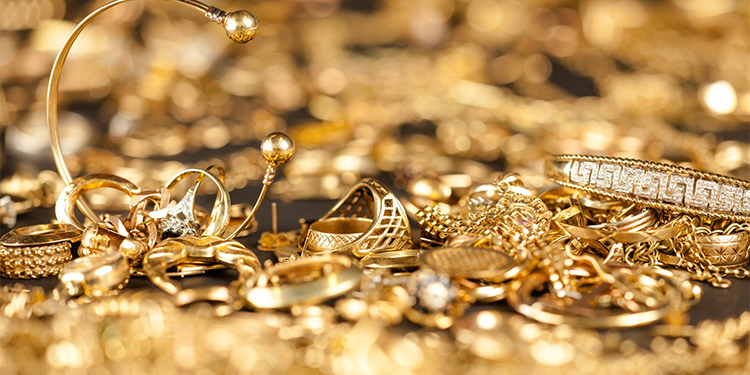
Although commonly used as a monetary exchange, Gold possesses physical qualities that have enchanted humans for thousands of years. Considering Gold never deteriorates and has excellent malleability, most jewelers have favored them above other materials over the years. One ounce of Gold can be stretched into a string of about 50 miles.
Gold can survive forever if managed well, ensuring its place as the most coveted jewelry material among jewelers and customers. It doesn't rust or degrade, and only a few rare chemicals or hot chlorine bleach may destroy it. Also, there are about four main types of gold jewelry listed below.
● Gold-plated: about 0.05% gold is layered over a brass material, mostly copper
● Gold-vermeil: thicker gold layer over a silver this time; they're more robust than the Gold plated Jewelry
● Gold-filled: these are usually flat Jewelry created with between 14-20 carats of Gold. They're layered mechanically.
● Solid Gold, also known as hypoallergenic Jewelry, is the real deal and is primarily expensive.
Silver Jewelry
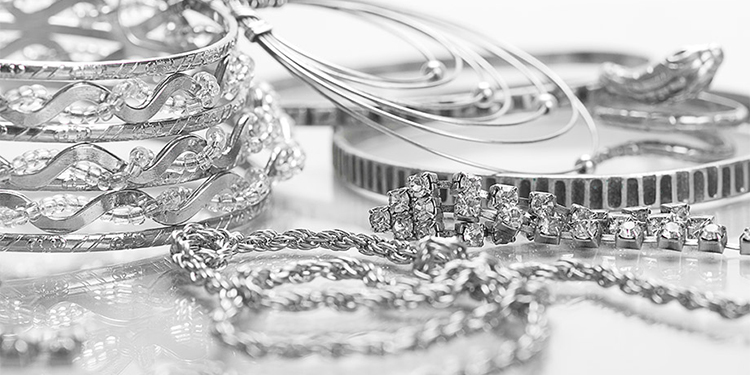
For most ancient Egyptian cultures, silver was valued far higher than Gold. This is due to numerous factors: first, silver has a very bright and incredible luster that makes it aesthetically pleasing. Secondly, they're more commonly found and less expensive than Gold or diamond. Unfortunately, due to how soft and high they conduct heat, modern jewelers and customers favor Gold and other gemstones more than them. Types of silver jewelry include:
● Fine silver: These items are 99.9% silver and.1% additional elements. Because it is the finest silver used in Jewelry and is quite delicate, pieces scratch readily and frequently lose form over time.
● Sterling silver: These pieces comprise 92.5% pure silver and 7.5% copper, with trace quantities of other minerals. Sterling silver jewelry shines brilliantly. However, it tarnishes fast.
● Argentium silver: Argentium silver is available in two grades, with pieces having either 6.8% or 4% copper and germanium. These items also tarnish less easily and need less maintenance.
Pearl Jewelry
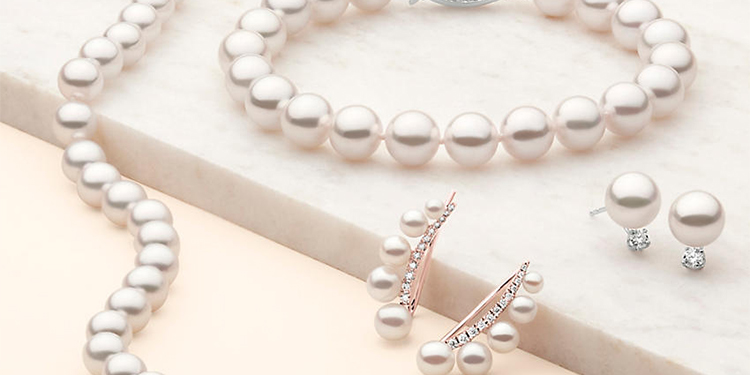
Pearls are seaborn Jewelry produced by special mollusks, mussels, and oysters to defend against foreign irritants. Due to the rarity of this happening naturally, almost all of the pearls currently in the market are cultured (farmed or produced due to human interference. The beauty and elegance of pearls are unrivaled in the world of Jewelry.
Pearls are famed for their stunning beauty, which stems from their characteristic shine, often known as a jewel's luster. If you want your pearl jewelry to endure a long time, it takes more maintenance than other forms of Jewelry. Although they are helpful in specific contexts, it is simple to be duped into purchasing a fake strand of pearls. Because of their scarcity, some pearls command a higher price tag than others when set in Jewelry. The main types of pearl jewelry include:

● Freshwater pearls: The most abundant and least costly are freshwater pearls. They are cultivated in freshwater lakes and ponds, thus the name, and are widely available. Freshwater pearls have the most diverse spectrum of sizes and colors of any pearl kind.
● Akoya pearls: Akoya pearls, often known as the classic pearl, are the most popular pearl variety used in Jewelry. They are saltwater-cultivated pearls produced mainly in Japan. The Akoya pearl is almost always round, making it an ideal gem for Jewelry. It is the tiniest commercial pearl, with a diameter of just 7mm. It is available in white and cream, with rose and silver undertones.
● Tahitian pearls: Despite their name, Tahitian black pearls come in various dark, natural colors. Greens, blues, browns, and greys are the most prevalent. It is generally agreed that no one hue is superior to any other. However, green-colored varieties are common among buyers.
● South Sea pearls: South Sea pearls are the world's rarest and most precious pearls. Because of their small cultivation area and long cultivation period, they have a smooth and rich luster. Their hues vary from bright white to rich honey gold. They are hardly ever precisely round, which is why long chains of pearl jewelry produced with south sea pearls are uncommon.
Gemstone Jewelry

A gemstone is a mineral or rock that may be used in Jewelry once it has been cut, faceted, and polished. Gemstones are a valuable commodity in today's economy. Since the beginning of humankind, they have been sought after for their beauty, metaphysical qualities, and commercial use. The beauty of gemstones is varied, and many gems are accessible in a breathtaking array of hues. In their natural condition, most diamonds are unappealing. They may be regular rocks or pebbles. Full color and shine may be visible after a skillful cutting and polishing of a stone. Some examples of common Gemstones used for Jewelry include: Mohr's scale is used by geologists to assess the durability of gemstones.
● Emerald: Many people like the hue of emerald, which ranges from blue-green to yellow-green. Internal cracks may be troublesome, despite its hardness of roughly 7.7 on the Mohr scale.
● Garnet: Garnets are found in orange, brown, green, and pink. These commonly available gemstones are rated a seven on the Mohr scale.
● Ruby: Ruby is the name given to a form of the mineral corundum that is a vivid shade of red, ranging from pink to blood red. Since antiquity, rubies have been prized for their beauty and durability as one of the most coveted stones in classic jewelry designs. Onyx
Types of Jewelry
Watches
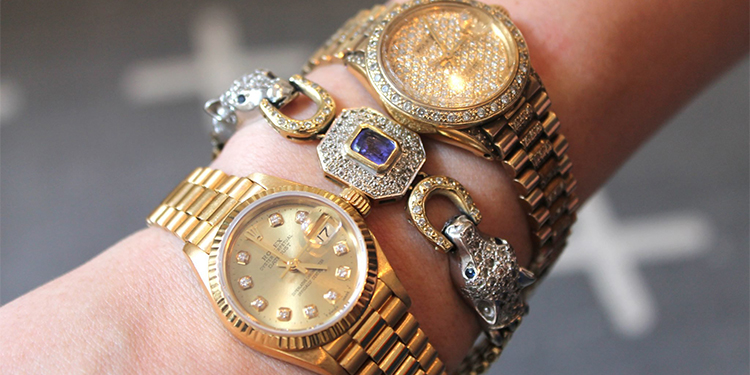
Women were the only ones who wore watches before the twentieth century, and they did it as a fashion statement. In the meanwhile, most men wore pocket watches. While wearing a watch is not as trendy nowadays, most people still wear it for formal occasions.
Bracelet

A bracelet is a piece of Jewelry worn around the wrist. People may wear bracelets for a variety of purposes, including as an adornment. Bracelets, when worn as decorations, may provide a supporting purpose by holding additional pieces of ornamentation, such as other gemstones.
Ring
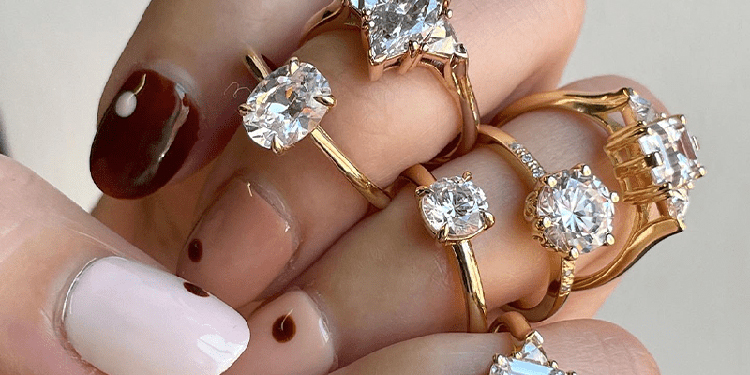
We call a ring a band in the shape of a circle around the finger. For Jewelry, rings are often crafted from precious or semiprecious metals that are resistant to corrosion and will keep their form even after repeated daily use. Engagement rings and wedding bands are typical rings that signify a commitment between two people in a romantic relationship.
Earring
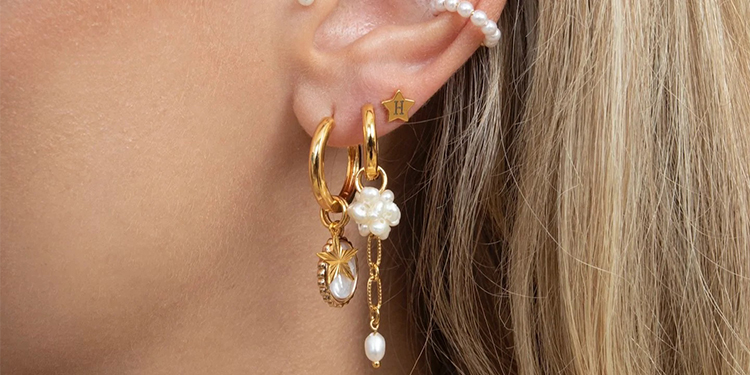
An earring is a piece of ear jewelry typically worn on the earlobe. Earrings are joined to the ear by an earlobe piercing and may be affixed to any portion of the ear, including the helix, industrial, rook, tragus, conch, or lobe. Earrings may be made of precious metals, gemstones, beads, glass, or even plastic, and they can be worn near the ear or hanging below the ear. They are often held in place by a stud or hook.
Necklace
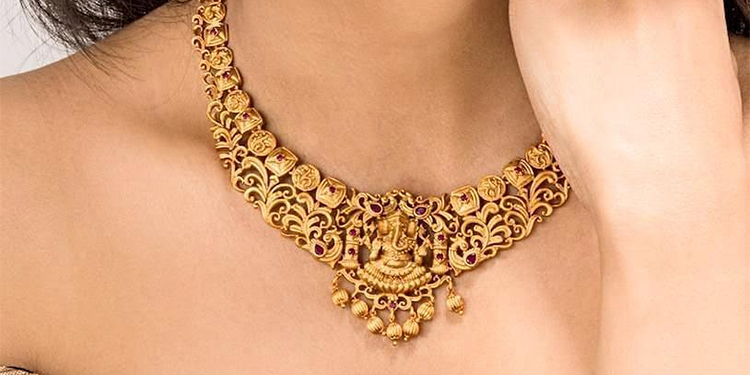
Jewelry and necklaces have a long history. According to the International Gem Society, the first piece of Jewelry discovered was a necklace. Necklaces may be stylish or classic and come in various materials, designs, and pricing ranges. Choosing the appropriate necklace might seem daunting, but keeping your particular style in mind is key.
Others include
● Toe Ring
● Brooch
● Anklet
● Cufflink
● Cameo
Types of Jewelry Designs
Antique/Vintage Jewelry
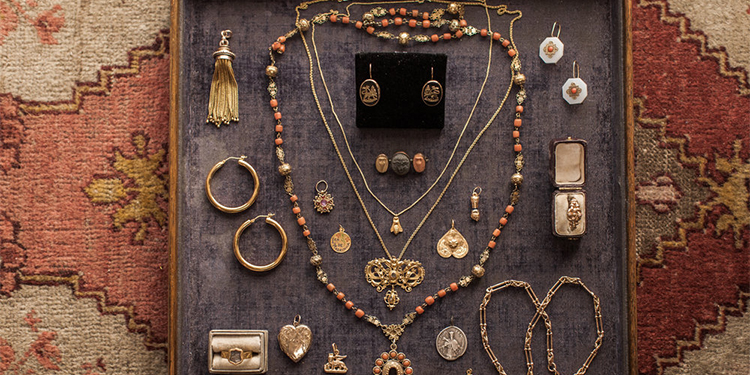
Both antique and vintage Jewelry look alike; they're different. When a piece of Jewelry is 100 years or older, it is termed an antique. A vintage piece of Jewelry is at least fifty years old and has timeless designs that never 'go out of style.' Antique Jewelry is often too scarce and precious to be donned daily, but vintage jewelry is donned as a statement piece by those who own them
Beaded Jewelry
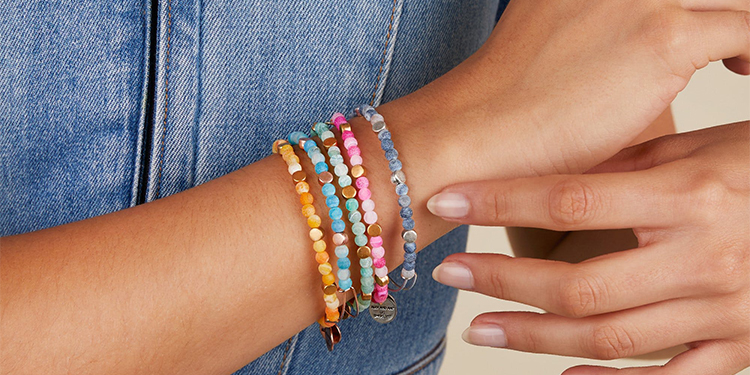
A bead is a small ornamental item that comes in various forms and has a hole bored through it for threading or stringing. Beads are made from a broad range of materials, including paper, glass, and wood, as well as metals such as Gold, silver, brass, and copper. Beads have been used as Jewelry in almost every culture throughout the globe from time immemorial.
Bridal Jewelry
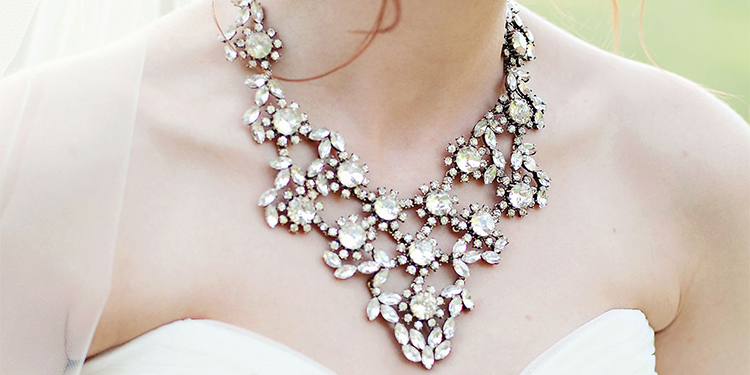
When we talk about bridal Jewelry, we are talking about statement jewelry, magnificent Jewelry that is big and ornate, as the name implies. In every culture, the bride is the center of attention during a wedding - after all, it is her special day - and she should wear the best
Others include
● Fashion Jewelry
● Tribal Jewelry
● Handmade Jewelry


Leave a Comment